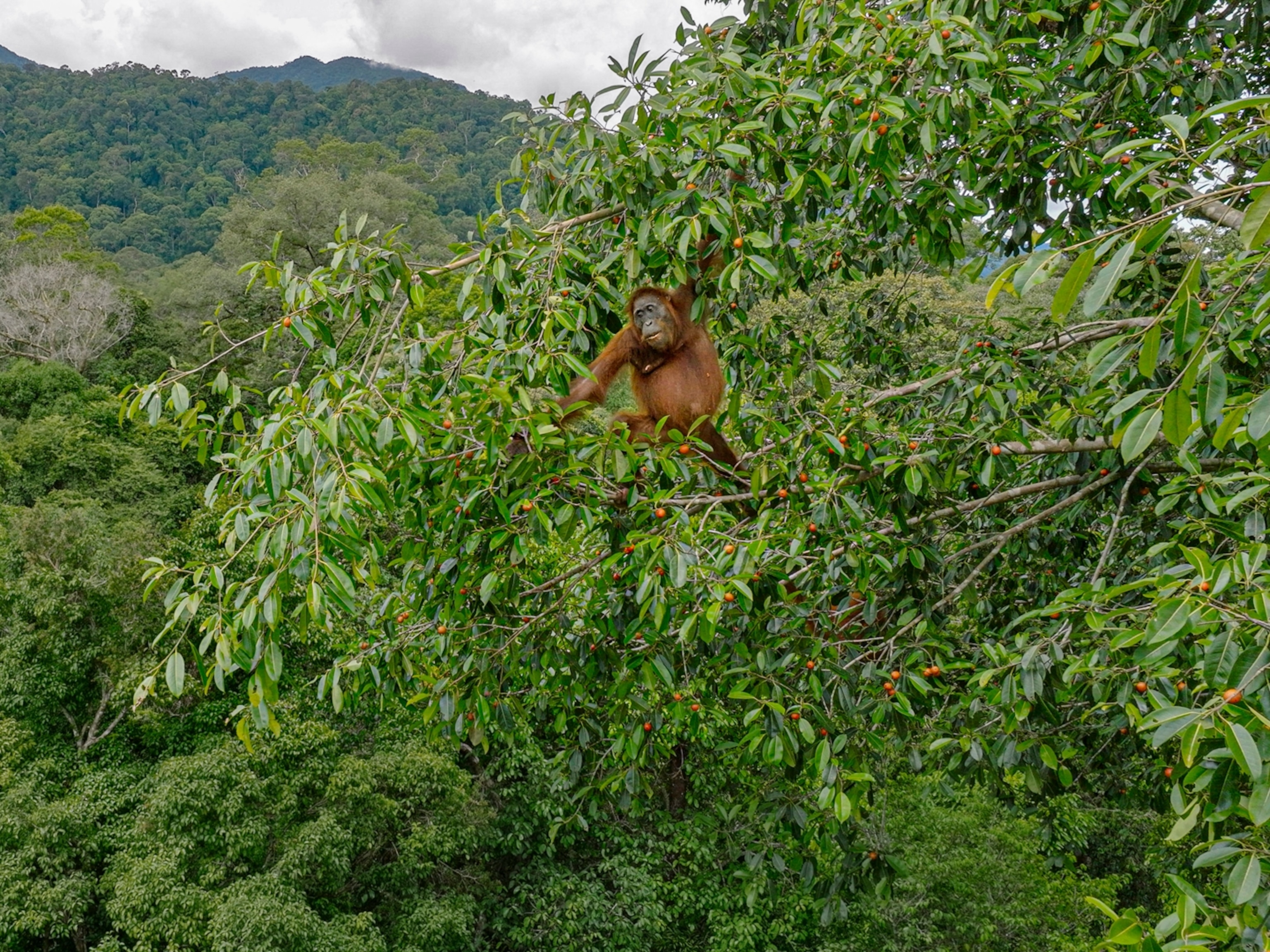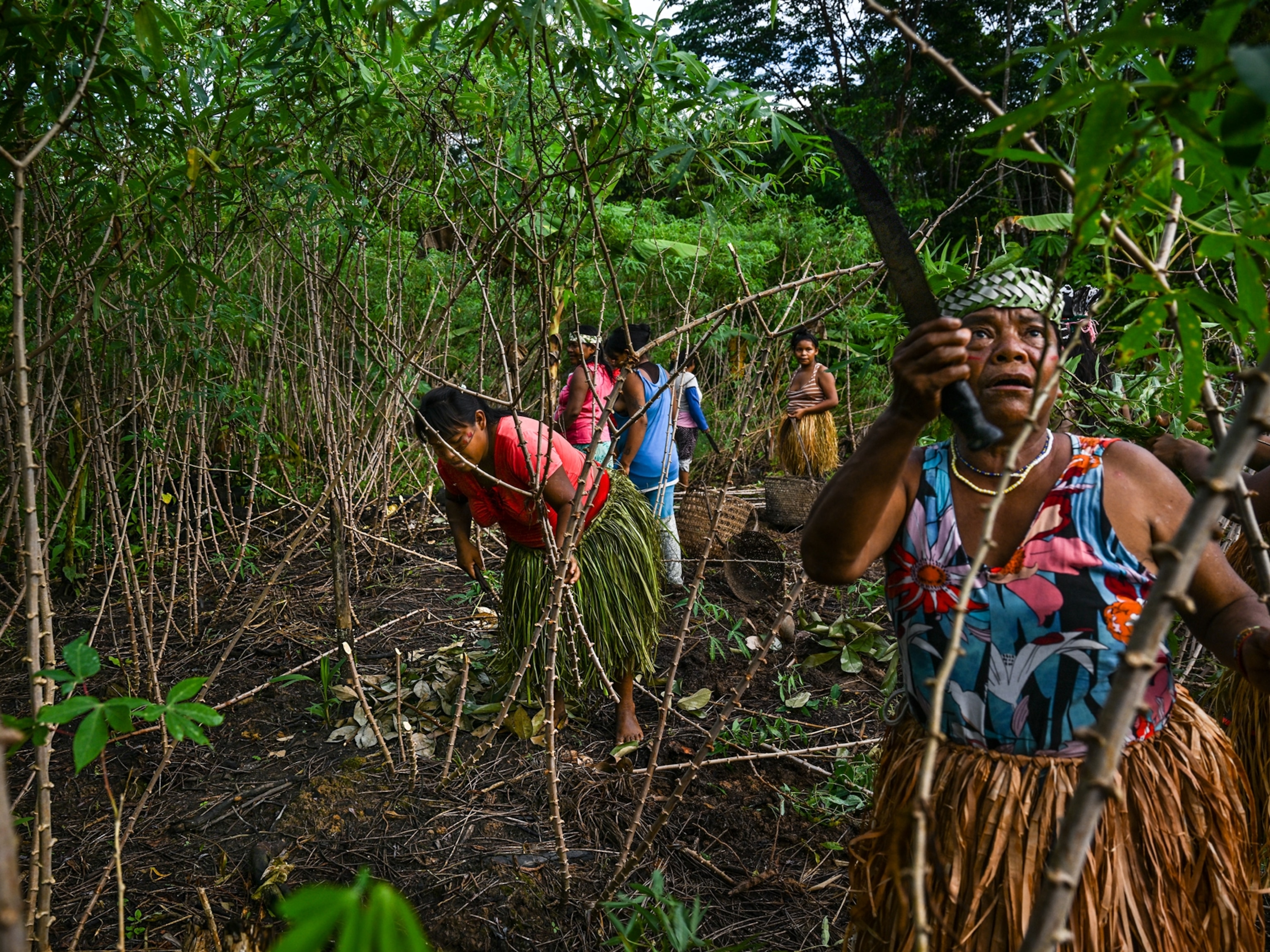
Grasslands More Diverse Than Rain Forests—In Small Areas
But rain forests still have the most plant species on a large scale.
Sorry, tropical rain forests. Grasslands have the most plant species—at least when the area studied is smaller than a few parking spaces.
In a recent study, biologists scoured data from previous papers about plant-rich ecosystems around the world and discovered that grasslands harbor the most plant species in areas less than 540 square feet (50 square meters).
"The general perception is that the most species-rich places in the world are tropical rain forests. Depending on how you look at it, that's correct," said study co-author Robert Peet, a plant ecologist at the University of North Carolina, Chapel Hill.
But the grasslands diversity "surprised us as we looked through studies and databases. We knew grasslands would be on the list, but not at the top [for so many scales]," Peet said.
What's more, "these are relatively infertile, long-grazed, or mowed grasslands," he said.
(See a map of the world's grasslands.)
Plant-Rich Grasslands
Peet and three other biologists gathered data from all the species inventories they could find, then determined species richness—or the diversity of species in a specific place—in terms of area.
At large scales, tropical rain forests were most diverse. A rain forest in Ecuador, for example, holds the record for an area of 2.5 acres (1 hectare) with 942 species. Meanwhile a Costa Rican rain forest won the 1,075 square-foot (100 square-meter) category with 233 different plant species.
(See a map of the world's tropical rain forests.)
Tropical rain forests hog most of the species-rich limelight because their canopies often reach more than 165 feet (50 meters) above the forest floor.
That's a lot of area for species to flock, but height isn't everything when it comes to the species richness of vascular plants—a group including ferns; flowering plants, which encompass grasses and most trees; conifers; club mosses; and more.
European, Argentine Grasslands Win Out
In grasslands and meadows of Eastern Europe and Argentina, such plants reign supreme.
A 527-square-foot (49-square-meter) patch of Czech grassland contained 131 vascular plant species—the most cataloged.
A patch of Argentine grassland that's only 10 square feet (1 square meter) contained 89 species. And in just a square foot (0.1 square meter) of Romanian grassland, 43 species thrived.
"That's an awful lot to pack into such a small area," said Peet, whose study appeared online March 16 in the Journal of Vegetation Science.
"We think mowing or grazing levels the playing field for competition for light on top," he said.
"That, combined with slow growth rates and infertile soils, probably allows grass species to cram into small areas."
Peet also noted that fertilized lawns aren't biodiversity hot spots—the extra nutrients allow only a few plant species to flourish and thus crowd out other species.
(Read about threats to grasslands.)
Grassland Diversity a Mystery
The team hopes its results will encourage ecologists to look more closely at why only two kinds of ecosystems—tropical rain forests and grasslands—win out in terms of species diversity.
The scientists also plan to perform more comprehensive surveys that capture the average number of plant species across regions and ecosystems.
"Regardless, I think we're going to see this pattern repeated in principle" over many geographic regions, Peet said.
Related Topics
You May Also Like
Go Further
Animals
- Octopuses have a lot of secrets. Can you guess 8 of them?
- Animals
- Feature
Octopuses have a lot of secrets. Can you guess 8 of them? - This biologist and her rescue dog help protect bears in the AndesThis biologist and her rescue dog help protect bears in the Andes
- An octopus invited this writer into her tank—and her secret worldAn octopus invited this writer into her tank—and her secret world
- Peace-loving bonobos are more aggressive than we thoughtPeace-loving bonobos are more aggressive than we thought
Environment
- This ancient society tried to stop El Niño—with child sacrificeThis ancient society tried to stop El Niño—with child sacrifice
- U.S. plans to clean its drinking water. What does that mean?U.S. plans to clean its drinking water. What does that mean?
- Food systems: supporting the triangle of food security, Video Story
- Paid Content
Food systems: supporting the triangle of food security - Will we ever solve the mystery of the Mima mounds?Will we ever solve the mystery of the Mima mounds?
- Are synthetic diamonds really better for the planet?Are synthetic diamonds really better for the planet?
- This year's cherry blossom peak bloom was a warning signThis year's cherry blossom peak bloom was a warning sign
History & Culture
- Strange clues in a Maya temple reveal a fiery political dramaStrange clues in a Maya temple reveal a fiery political drama
- How technology is revealing secrets in these ancient scrollsHow technology is revealing secrets in these ancient scrolls
- Pilgrimages aren’t just spiritual anymore. They’re a workout.Pilgrimages aren’t just spiritual anymore. They’re a workout.
- This ancient society tried to stop El Niño—with child sacrificeThis ancient society tried to stop El Niño—with child sacrifice
- This ancient cure was just revived in a lab. Does it work?This ancient cure was just revived in a lab. Does it work?
- See how ancient Indigenous artists left their markSee how ancient Indigenous artists left their mark
Science
- This 80-foot-long sea monster was the killer whale of its timeThis 80-foot-long sea monster was the killer whale of its time
- Every 80 years, this star appears in the sky—and it’s almost timeEvery 80 years, this star appears in the sky—and it’s almost time
- How do you create your own ‘Blue Zone’? Here are 6 tipsHow do you create your own ‘Blue Zone’? Here are 6 tips
- Why outdoor adventure is important for women as they ageWhy outdoor adventure is important for women as they age
Travel
- Slow-roasted meats and fluffy dumplings in the Czech capitalSlow-roasted meats and fluffy dumplings in the Czech capital
- Want to travel like a local? Sleep in a Mongolian yurt or an Amish farmhouseWant to travel like a local? Sleep in a Mongolian yurt or an Amish farmhouse
- Sharing culinary traditions in the orchard-filled highlands of JordanSharing culinary traditions in the orchard-filled highlands of Jordan




